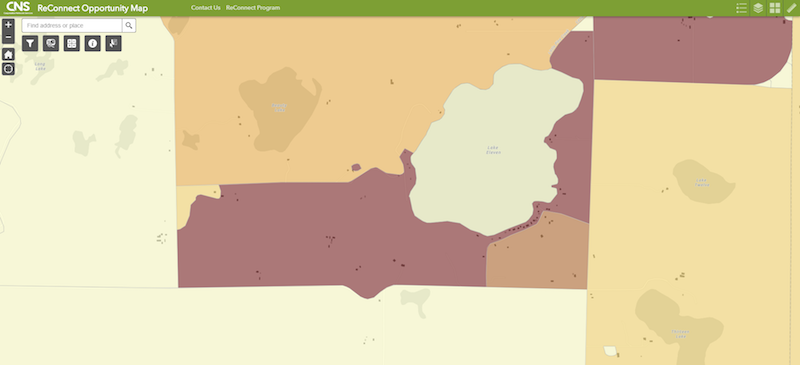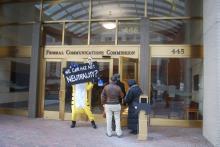
The federal government shutdown continues to drag on, but people heading up rural broadband projects are not waiting until it’s over to investigate federal funding sources. Tools like the ReConnect Opportunity Map from Cooperative Network Services (CNS) will help reduce some of the uncertainty and time required to prepare an application for this and other funding opportunities.
The GIS tool focuses on the ReConnect grant program’s criteria, which will allow users to quickly identify census blocks across the U.S. that are eligible for funding. CNS has also added special color-coding to display density of households and included information about those census blocks to help complete the applications. Examining density of households per road mile allows planners to more quickly prepare an application and establish a cost estimate. The map digs down even further to give information on housing units, which will help with refining deployment costs.
The tool also allows users to define deployment areas on the map and run reports that include census block identifiers, households, and populations per mile. Even if the specific identified area doesn’t qualify for ReConnect funding, the information can be used for other purposes, such as for a potential project that might qualify for other funding or might be of interest to an Internet access provider looking to expand in the area.
Check out this sample screenshot and the explanation below:

View a larger version of the screenshot.
This image of an area in Minnesota indicates census blocks that do not currently have broadband speeds over 10 Megabits per second (Mbps) download and 1 Mbps upload. The blocks are color-coded based on the number of housing structures per road mile (darker = more housing units per road mile). Small dark spots are structures. The number of households per road mile shading allows users to quickly identify areas that may make the most sense to target since road miles generally equate to fiber construction corridor miles.
More Than ReConnect
Another feature, the ability to reveal telecom exchange boundaries, can help applicants get a picture of what other ISPs operate in the area. Whether an applicant is a municipality, a local ISP, a tribal Internet access provider, or any other entity, understanding what other services are available in the region is critical. Different companies respond differently to local competition and a frank evaluation about whether or not it’s worthwhile to compete with an incumbent in nearby areas is an important discussion.
ReConnect funds cannot be used for infrastructure in areas where the FCC is already funding broadband infrastructure, such as CAF II projects; the Opportunity Map also pins down that data.
While the map has been formatted to work with ReConnect grants, it can also be used for other applications, such as Farm Bill, Community Connect grants, A-CAM, or possibly state funding opportunities. In addition to planning for grant applications that will be submitted to deploy broadband in areas where it makes sense to build, this tool can help by eliminating areas where deployment might not be feasible.
For a quick demonstration of the ReConnect Opportunity Map, take a peek at this 4-minute video from CNS:
Learn more at the CNS website.
Who, What, When
The Reconnect Program is making $600,000,000 in funding open to a broad range of entities that might be in the business of providing high-quality connectivity in rural areas. Eligible entities include:
- Non-profit entities;
- For-profit corporations;
- Limited liability companies;
- Cooperative or mutual organizations;
- States, local governments, or any agency, subdivision, instrumentality, or political subdivision thereof;
- A territory or possession of the United States; and
- An Indian tribe (as defined in section 4 of the Indian Self-Determination and Education Assistance Act (25 U.S.C. § 450b)).
Application deadlines vary, depending on the type of funding requested and applicants can request grants, loans, or a combination with $200,000,000 available within each category. There are specifications for each category, including the amount requested, required matching funds, and the percentage of premises that are considered unserved.
Details are available at the FCC’s ReConnect website, but here are the application headlines:
April 29 for the 100 percent Grant funding category
May 29 for the 50 percent Loan / 50 percent Grant funding category
June 28 for the 100 percent Loan funding category








